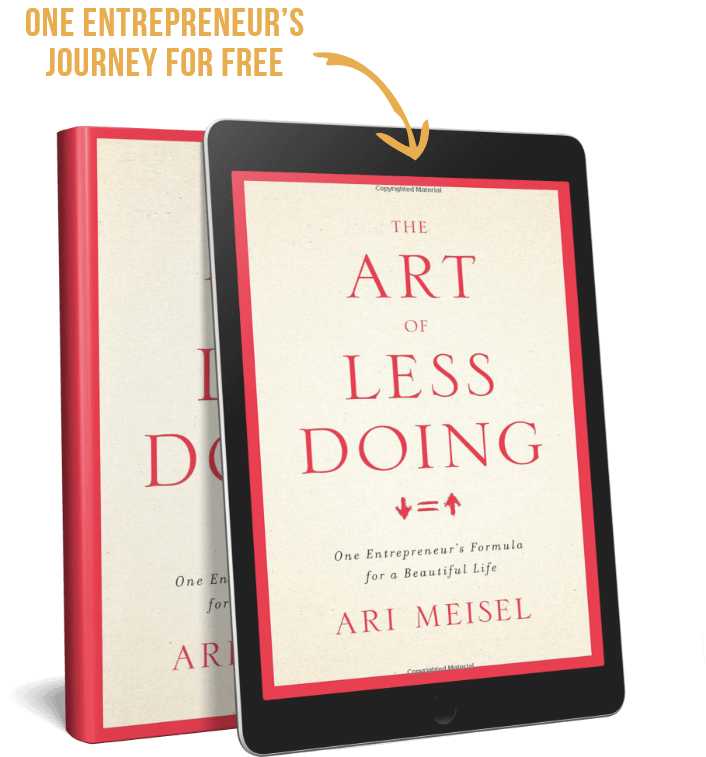One of the greatest salesmen of all time was Zig Ziglar, his book “Getting To The Close” is one of the few that I always keep on my shelf and refer to regularly. In true Less Doing fashion, he once said
“Lack of direction, not lack of time, is the problem. We all have 24-hour days.” — Zig Ziglar
You can never get to good at sales, and you certainly can’t ever get too efficient with your sales process. Sales Enablement is a simple but important concept that every organization must embrace if they want to create an efficient sales machine. Topo defines it as:
Sales enablement is the process of providing the sales organization with the information, content, and tools that help sales people sell more effectively. The foundation of sales enablement is to provide sales people with what they need to successfully engage the buyer throughout the buying process. A big part of sales enablement involves equipping sales people with information they can use in sales cycles. This information might take the form of customer-facing content, sales best practices, and tools to name just a few examples. Regardless of the form the information takes, it needs to be easy to consume and reusable across the sales organization.
The Sales Pipeline
We built a sales enablement tool out of Trello, Zapier, Toky, Intercom, Voxer, Slack, and Calendly. I’m not claiming that my system is the best because it’s ever-evolving, but it works really well for us and it might work really well for you too. So here’s how it works…
Trello serves as the brains and “dashboard” of the entire process. We use one Trello Power Up which is the Custom Fields power up, this allows us to put a dedicated email address and phone number field on every card.

Our Sales Trello Board has the following Lists (which represent phases of the process)

Sales Pipeline in Trello
- Resources — A static list of product info and pricing, templates, etc…
- New Lead — this is where all new leads go
- First Contact Attempt — salesperson moves the card to this list once the first contact is attempted
- Second Contact Attempt — salesperson moves the card to this list once the second contact is attempted
- Third Contact Attempt — salesperson moves the card to this list once the third contact is attempted
- Final Contact Attempt — salesperson moves the card to this list once the fourth and final contact is attempted
- Contact Made — Appointment Scheduled — salesperson or automation moves card here when a call is booked
- No Show for Call — If a potential buyer doesn’t show up the salesperson moves the card to this list which kicks off a series of SMS and emails to the person over the course of several days to get them to reschedule. If they don’t the card automatically moves to the COLD list
- Appointment Completed, Follow Up Call Scheduled — After a successful call with a potential lead the salesperson moves the card to this list if the person hasn’t bought or declined
- Closed, Won — When someone makes a purchase, the card is moved to this list by the salesperson
- Closed, Cold — If no response is received after four attempts by a salesperson or after several attempts by the no show automation, the card is moved here.
- Closed, Lost — if the lead says no to the offer the salesperson moves their card here
- Closed, Not Qualified — if a buyer turns out to be unqualified the salesperson moves their card here
Now to be perfectly honest, this setup by itself is a major step up from what many companies use to track their sales pipeline (I’m talking about lots of spreadsheets, like a whole lot) but here at Less Doing, we need to Optimize, Automate, and Outsource or else it’s just an Atari when what we really want is an Xbox One at our disposal.
The Machine
The first thing to tackle is how new leads get onto the pipeline in the first place. There are three ways this happens for us.
Landbot
We use an intake form powered by Landbot which looks like a chatbot as a landing page, you can check out ours here. The reason we like Landbot is it allows us to pre-qualify leads and direct them to the right product or call offering depending on their circumstances. We can put an unlimited volume of leads through it and they will always be handled appropriately. Once someone fills out the form and is considered qualified, a Zap creates a card in Trello in the New Lead list with all of their information.
Calendly
We use Calendly as our scheduling tool of choice to allow people to book info sessions, strategy calls, or our proprietary Productivity Power-Up Sessions. When someone books their call through Calendly it creates a card but not in the New Lead list, it puts in the Contact Made, Call Scheduled list.
Manual Entry
If a salesperson has an ad hoc email interaction with someone or if the founder gets a business card at an event the information can be manually entered by that person or a virtual assistant in the New Lead list.
In order to make the magic happen, make the salesperson’s life as easy as possible, and ultimately close more sales, there are well over a dozen automations at play, all run by Zapier.

New Lead
This is the most complex automation of the bunch and has a lot of steps to it. The trigger is a new card created in that list and it doesn’t matter if it’s manual or automated. These are the steps:
- Add a salesperson to the card using a round robin selection technique
- Try and find the lead in Intercom in case we’ve had contact with them in the past
- Send a message to our sales slack channel notifying the team of the new lead
- Format the date from Trello
- Find the row for that date in a google docs spreadsheet (we use this as an overall tracker for pipeline)
- Update the cell with the new number
- Update the original Trello card with the phone number from Intercom if we have it
- Send a text message to the person basically thanking them for their interest and letting them know a salesperson will be in touch soon.
- The zap then delays for 24 hours and checks to see if the card is still in the New Lead list
- If the card is still there after 24 hours a message is sent over Voxer to our sales group to let us know that the lead has been sitting for too long. We don’t let things fall through the cracks, ever.
First Contact Attempt
This is a simple one. When a card is moved here it sets the due date on it to tomorrow because we want the second attempt to be one day later.
Second Contact Attempt
Same idea but this time it sets the due date for three days later.
Third Contact Attempt
Again pushes the due date three more days for final contact
Final Contact Attempt
No automations here but I want to point out that none of the lists in our board are places to linger, there is always an action associated with each list so cards never sit.
Contact Made, Call Scheduled
Nothing happens when a card is moved here but if someone schedules a call in Calendly, no matter what list their card is in, the Zap will find it, move it to this list, and update the due date to the date of the call.
No Show for Call
This is a beautiful one, with sixteen steps. When a salesperson manually moves a card to this because the lead didn’t show up for their call, an email is immediately sent to them basically asking if they had trouble connecting to the zoom meeting. One hour later they get a text message asking them if they found a solution to their problem and if not, would they like to book another call. Then we delay for one day — and this part is critical — then we “Find Trello Card” and confirm that that card is still in the No Show for Call list. If it is that means the person has not responded and the zap continues. If the card is not in that list then it means the person responded and the zap will stop. This prevents a lead from getting a bunch of emails and texts even after they have responded. Three days later, it checks on the card again and if it’s still there sends them another email trying to get them to reschedule. Five days after that they get an email asking to just let us know if they are still interested. If they haven’t responded at that point, the card is automatically moved to Closed, Cold. Pretty cool right?
Appointment Completed, Follow Up Call Scheduled
The salesperson manually moves the card here and updates the due date to the expected date for follow up, no automations here.
Closed, Won
If at any point someone makes a purchase through our cart provider, ThriveCart, the zap will attempt to locate that persons card on the board and then automatically moves it to this list. If it can’t find a card for that person it will create one. The zap then continues to notify us in our Slack channel that a sale was made so we can all celebrate the win.
Closed, Cold
When a card is moved here the due date is set for THREE months from now so the salesperson can check-in and see if anything has changed.
Closed, Lost
When a card is moved here the due date is set for THREE months from now so the salesperson can check-in and see if anything has changed.
Closed, Not Qualified
When a card is moved here the due date is set for SIX months from now so the salesperson can check-in and see if anything has changed.
The Solution
So that’s how it works. This is an incredibly easy system to bring new salespeople in as the need arises since all of the minutiae is handled for them. A system like this makes life easier for salespeople for sure, but the greatest benefit, in my opinion, is that it avoids errors. Mistakes aren’t made, and leads don’t fall through the cracks. My hope is that there is enough detail for you to create your own sales pipeline and crush your sales goals
P.S. Whenever you are ready…here are 4 ways I can help you grow your business:
- Join our FREE Facebook Group — The Replaceable Founder
- Get our FREE Replaceable Founder Mini-Course
- Come to our next One-Day Intensive “Becoming Replaceable” Workshop. Click Here. I’ll save you a spot.
- Want to work with us privately? Just answer a few questions and find out if you’re a good fit. Apply Now




